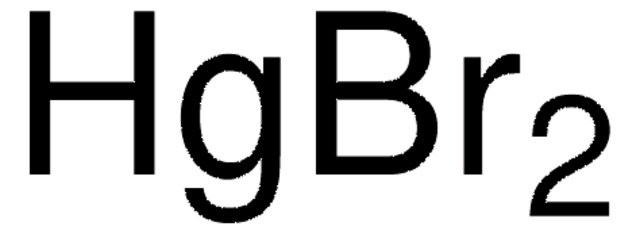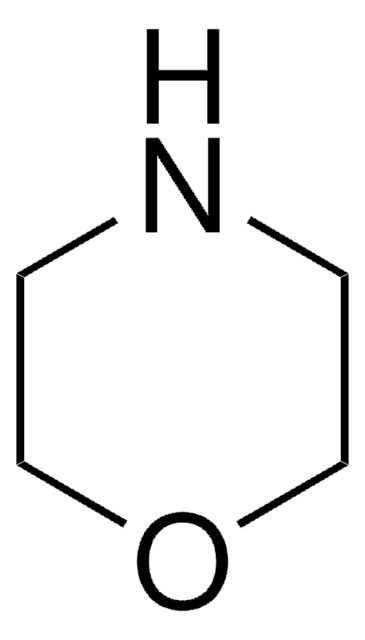83353
Mercury(II) bromide
puriss. p.a., ACS reagent, ≥99.0% (precipitation titration)
Synonyme(s) :
Mercuric bromide
About This Item
Produits recommandés
Qualité
ACS reagent
puriss. p.a.
Niveau de qualité
Pression de vapeur
1 mmHg ( 136.5 °C)
Pureté
≥99.0% (precipitation titration)
Forme
powder or crystals
Résidus de calcination (après réduction)
≤0.02%
Point d'ébullition
322 °C (lit.)
Pf
236 °C (lit.)
Traces d'anions
chloride (Cl-): ≤2000 mg/kg
sulfate (SO42-): ≤50 mg/kg
Traces de cations
Ca: ≤10 mg/kg
Cd: ≤5 mg/kg
Co: ≤5 mg/kg
Cr: ≤5 mg/kg
Cu: ≤5 mg/kg
Fe: ≤5 mg/kg
K: ≤50 mg/kg
Mg: ≤5 mg/kg
Mn: ≤5 mg/kg
Na: ≤50 mg/kg
Ni: ≤5 mg/kg
Pb: ≤5 mg/kg
Zn: ≤5 mg/kg
Chaîne SMILES
Br[Hg]Br
InChI
1S/2BrH.Hg/h2*1H;/q;;+2/p-2
Clé InChI
NGYIMTKLQULBOO-UHFFFAOYSA-L
Vous recherchez des produits similaires ? Visite Guide de comparaison des produits
Description générale
Mention d'avertissement
Danger
Mentions de danger
Conseils de prudence
Classification des risques
Acute Tox. 1 Dermal - Acute Tox. 1 Inhalation - Acute Tox. 2 Oral - Aquatic Acute 1 - Aquatic Chronic 1 - STOT RE 2
Code de la classe de stockage
6.1B - Non-combustible acute toxic Cat. 1 and 2 / very toxic hazardous materials
Classe de danger pour l'eau (WGK)
WGK 3
Point d'éclair (°F)
Not applicable
Point d'éclair (°C)
Not applicable
Certificats d'analyse (COA)
Recherchez un Certificats d'analyse (COA) en saisissant le numéro de lot du produit. Les numéros de lot figurent sur l'étiquette du produit après les mots "Lot" ou "Batch".
Déjà en possession de ce produit ?
Retrouvez la documentation relative aux produits que vous avez récemment achetés dans la Bibliothèque de documents.
Notre équipe de scientifiques dispose d'une expérience dans tous les secteurs de la recherche, notamment en sciences de la vie, science des matériaux, synthèse chimique, chromatographie, analyse et dans de nombreux autres domaines..
Contacter notre Service technique











